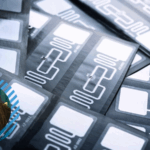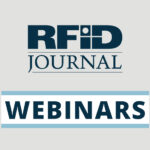I will be teaching a course in radio frequency identification at the undergraduate level. Can you identify or suggest a list of texts I should use?
—Charles (Massachusetts)
———
Charles,
There are a number of books available, and the right one depends on the nature of your course. Some are more technical and aimed at RF engineers, while many are more general in nature and focus on the use of RFID in business. Here are some of the books available on Amazon. Some are almost 10 years old, but they do contain relevant background information:
Mike Meyers’ CompTIA RFID+ Certification Passport
By Mark Brown, Sam Patadia and Sanjiv Dua
McGraw Hill-Osborne, 2007 (313 pages)
CompTIA no longer offers RFID+ certification, but this book is still available on Amazon. It starts off with RFID basics, including a thorough explanation of what radio signals are, how they behave and the ways in which they can be used by RFID devices. The next few chapters focus on tags, readers and peripherals, followed by system design, product selection, system installation, and testing and troubleshooting coverage. Finally, the book wraps up with a look at RFID standards and regulations.
RFID: A Guide to Radio Frequency Identification
By Pedro M. Reyes
McGraw-Hill Education, 2011 (176 pages)
Written by the director of Baylor University‘s Center for Excellence in Supply Chain Management, this book aims to help businesspeople decide whether, when and how to use RFID technology to improve supply chain management processes. It explains the basics of how RFID works, its history, the state of adoption (as of 2011) and the many commercial applications for which it can be used.
RFID Applied
By Jerry Banks, David Hanny, Manuel A. Pachano and Les G. Thompson
Wiley, 2007 (528 pages)
This book covers the technical and business aspects of choosing and deploying an RFID system, and is broken down into three sections: Part A, “RFID Applied,” explains the basics of RFID and the most recent advances and applications of the technology. Part B, “Applications in Ten Areas,” details the use of RFID in the automotive, health-care, retailing and transportation industries. And Part C, “RFID Activities in Ten Countries,” discusses how RFID is being used throughout China, Germany and eight other countries.
Improving Supply Chains Using RFID & Standards
By Ian Robertson
September 2011 (140 pages)
This book is not focused on the technology. Instead, it’s a rich and detailed examination of how to extract value from the use of RFID in supply chains. It explains how RFID data can benefit businesses, from the receiving of raw materials all the way to the sales of end products to customers or consumers, and also outlines the benefits of employing the technology to process returns through reverse logistics. What’s more, it’s written in an easy style that assumes no prior knowledge of supply chains or RFID on the part of the audience.
RFID Handbook: Applications, Technology, Security, and Privacy
By Syed A. Ahson and Mohammad Ilyas
CRC Press, 2008 (712 pages)
The RFID Handbook offers an overview of RFID technology, including security and privacy risks, as well as best practices for achieving productivity improvements. Contributors explain the many different business applications for RFID, including automated receiving, triage for treating those effected by natural disasters, enabling robots to identify objects and more.
The RF in RFID: Passive UHF RFID in Practice
By Daniel M. Dobkin
Newnes, 2007 (504 pages)
The first part of this book is an overview of RFID fundamentals and practices. The second section focuses on passive ultrahigh-frequency (UHF) RFID technology, including tags, readers and antennas. The publisher recommends that readers have an electrical engineering background and be new to RFID. A CD-ROM included with the book contains full-color images, spreadsheets, an open-source example graphical user interface, and demo versions of commercial RFID software.
RFID Design Fundamentals and Applications
By Albert Lozano-Nieto
CRC Press, 2010 (283 pages)
This book focuses on the complexities of tag-to-reader communication, and is, according to the publisher, directed toward both professionals and students in electronics, telecommunications, and new technologies. It covers the different types of antennas used in transponders, the components of a transponder, the different types of antennas used with RFID readers, different types of modulation, communication links, modes of operation for transponders operating at different frequencies, the principles of arbitration and anti-collision, and commands used by transponders.
RFID in the Supply Chain
By Pedro M. Reyes
McGraw-Hill Education, 2011 (176 pages)
This book offers an overview of RFID technology and explains the Electronic Product Code (EPC) standards. It provides several real-world case studies to illustrate the broad range of RFID applications across industries, and also explains the benefits that RFID can deliver to companies.
RFID for the Supply Chain and Operations Professional
By Pamela Zelbst and Victor Sower
Business Expert Press, 2012 (150 pages)
This book aims to help readers with no prior knowledge to develop a basic understanding of the technology. It discusses current applications and specific examples of RFID applications in a variety of industries; explains how RFID can be used with other technologies, including GPS, ERP and robotics; and gives an overview of the RFID implementation process.
RFID Implementation
By Dennis Brown
McGraw-Hill Education, 2006 (466 pages)
RFID Implementation lays out the basics of RFID technology components, standards and regulations, and explains the steps necessary to execute a successful RFID rollout. The focus is on creating optimal project strategies and blueprints, choosing and installing hardware and software, and managing a successful RFID system.
—Mark Roberti, Founder and Editor, RFID Journal








